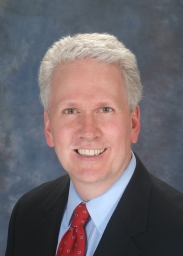All communications training programs are not created equal.
That may sound somewhat pejorative so let me explain. The thrust here is that every spokesperson deserves individualized attention. What’s effective for one person may be wholly inappropriate for another.
An example: Yammering on about the basics with experienced executives can cause them to grow impatient, dismissing the program out of hand. On the flip side, beginning at too sophisticated a level could leave inexperienced spokespeople scratching their heads in frustration.
Let’s examine a number of spokesperson profiles with recommendations for setting a training approach that works best for each.
It is important to emphasize that I am not referencing a one and done workshop. True, an initial session is wise. The fact is sustained professional development containing a variety of strategies is mandatory if you hope to achieve your company’s business and public policy objectives.
C-suite Executives
These high flyers need to be handled both with kid gloves and with stern discipline. That may sound contrary. Here’s what I mean.
 As for the kid gloves part, rare is the CEO who lacks a healthy ego. I don’t mean to say egotistical in every case. It’s that they generally have a good dose of self-confidence in their abilities, often including their ability to communicate. Most have been through the rigors of addressing large halls and engaging in tough exchanges with the press, so they don’t need the basics. In fact, a program that is too elementary will bore them to the point of thinking it a waste of time, and rightly so.
As for the kid gloves part, rare is the CEO who lacks a healthy ego. I don’t mean to say egotistical in every case. It’s that they generally have a good dose of self-confidence in their abilities, often including their ability to communicate. Most have been through the rigors of addressing large halls and engaging in tough exchanges with the press, so they don’t need the basics. In fact, a program that is too elementary will bore them to the point of thinking it a waste of time, and rightly so.
Where does the stern discipline come in? Your communications training consultant must have the backbone to establish a peer-to-peer relationship with C-suite officers. I’ve witnessed too many communications experts — both internal and external — bow and scrape before the big boss. Fatal mistake. These top guns expect to gain from specialized expertise best delivered in a conversation among equals.
Communications and Public Affairs Senior Staff
Two overarching principles apply when organizing communications training for internal staff. First, they often have responsibility as the first line of contact with reporters. Whether they are charged with speaking on the record or on background, they must be skilled at bringing home with impact their company’s message, which argues for a program that imbues them with front line capabilities.
Second, they must take ultimate accountability for forging the firm’s messaging and for ensuring that all spokespeople have internalized it in order to verbalize it. Thus, a focus on message development and discipline also needs to be part of their program.
New Spokespeople
This is the walking on eggshells portion. These individuals have not stood in front of an audience or interacted with the media. They are sometimes nervous or outright scared (I will admit that in my 25+ years in the game I have made two participants cry; no, I wasn’t trying to drive them to tears, and to their credit both soldiered on and, at least to some degree, worked through their trepidation). The fact that new voices show a desire to sharpen their communications edge — and are taking the first step to do so — is laudable.
Often, the initial session with a group of newbies is, in effect, a casting call. It’s not so much a matter of giving them everything they need in one day (as if that were possible in the first place). It’s to assess who has potential to advance as a spokesperson. That role is not for everyone; there’s no shame in that. We all have varying interests and aptitudes.
The Technical Expert
This type of training can be the most challenging in my experience. These are authorities with vast knowledge about their subjects. Therein rests the problem.
They know so much that they want to explain every minute detail to audiences, reporters, and policymakers. That’s not the way to express a winning message.
You might wonder why they just can’t trim the verbiage. It’s not that easy. Delivering a concise and readily understandable message involves an entirely new way of thinking for them. Bottom line, this type of professional development takes time and lots of energy (both from the experts and from your training consultant). Frequent sessions laden with lots of practice rounds are called for.
Will they still lapse into jargon and journey through the weeds? In my experience, there’s little doubt, so it’s often best to use them in public situations only when their specific morsel of an issue arises AND when you can at least somewhat control things. This strongly suggests that a member of the company’s communications staff sits in on media interviews, for example.
Yes, there are differences among CEOs, communications experts, new spokespeople, and issue experts when it comes to broadcasting a message. I recommend that you be 100 percent certain that the consultants you seek out to assist you with your communications training programs fully and firmly grasp these distinctions,

